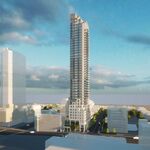innsertnamehere
Superstar
I don't expect those to get replaced any time soon as they aren't capacity issues. The only two that are even close to capacity is 407W to 404S and 410S to 407E as far as I know and even then they operate generally fine.Hey now, it is just leased (for 99 years)
At least (ha!) we learned our lesson and toll 407 East ourselves.
Speaking of 407 ETR, many sections have reached their maximum width with the OG design limit, with other stretches reaching full build out soon. What's next for the 407? I hope it's replacing the cheap loop ramps at major interchanges with proper flyovers. When done, we'll get a few more stackie bois so 400/407 won't be alone as Canada's only true stack interchange.
The bigger question is if the 407 will move to some more creative solutions to keep building highway capacity like building a collector-express system.
The 407 has proven to be quite cheap in terms of building new infrastructure other than new lane widenings - they have left new interchanges to provide additional access unbuilt and partially built for decades now...
- Upper Middle Rd in Burlington
- Bramalea Rd is only a half interchange, can be a full
- Goreway Rd is a half only, can be a full
- The original 407 EA included an interchange at Kipling, though that may not be feasible today
- Centre St in Vaughan still has land available to build it's planned interchange, though the existence of the Viva BRT may complicate it.
- Both 9th line and Donald Cousens are missing multiple ramps.
The only ones 407ETR is even thinking of addressing relatively soon are a few of the ramps at 9th Line and Donald Cousens, but even then only partially.





